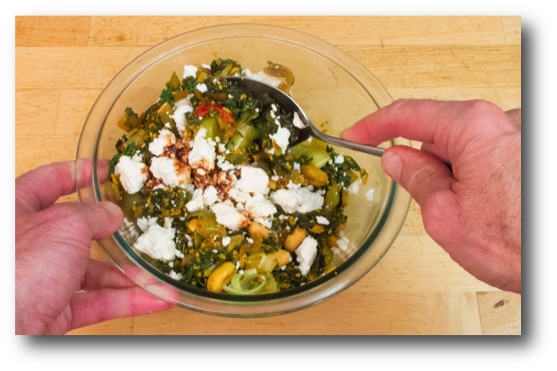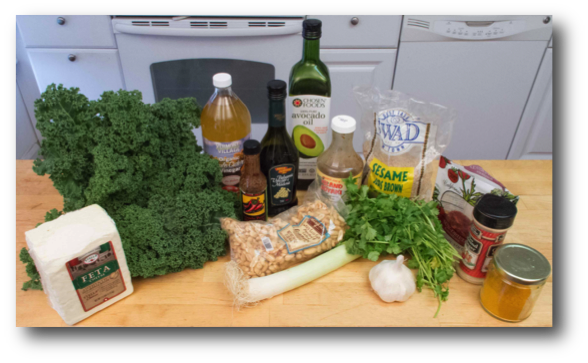 Dig kale? I didn’t until only a few years ago, but now I’m a big fan, especially when it’s made the way you see here!
Dig kale? I didn’t until only a few years ago, but now I’m a big fan, especially when it’s made the way you see here!
Nutritionally, kale rates highest along with collard, turnip, and mustard greens, Swiss chard, and upland watercress with a score of 1000 on the Aggregated Nutrient Density Index (ANDI), which scores foods from 1-1000 based on their nutrient to calorie ratio. Kale is particularly rich in vitamin K (promotes healthy blood, bones, and more), vitamin A (promotes healthy eyes, teeth, immune system, and more) and vitamin C (promotes healthy bones, connective tissue, immune system, and more). Of note, vitamins K and A are both oil/fat soluble, which means kale is best eaten along with some oil or (healthy) fat (for example, a shot of olive oil, avocado oil, as used here, or oil-based salad dressing).
Here’s what need for ingredients to make kale teriyaki. Click any picture on this page for a complete step-by-step picture book recipe.

 December 6th, 2016
December 6th, 2016  brucetretter
brucetretter 

 Posted in
Posted in  Tags:
Tags: